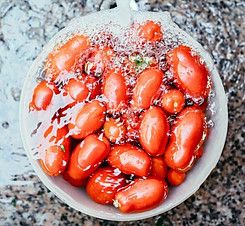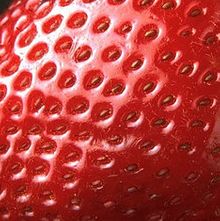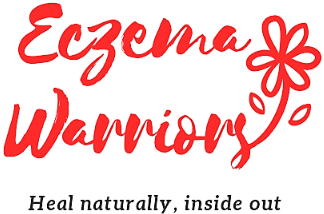
Eating plenty of fruits and vegetables is one of the best things you can do for your health. But in order to not take in the pesticides on them, we need to know how to clean fruits and vegetables naturally. There is actually no need for any commercial cleaners dedicated to your fresh produce.
Why do we need to clean them?
Pesticides are used on many produce, even some organic ones. The difference is that on organic produce, any pesticides allowed are much more stringent in amount as well as health requirements, in comparison to those used on non organic produce.
Pesticides can be categorised mainly into herbicides and insecticides.
Herbicides are used to kill weeds and other unwanted plants. Selective herbicides kill certain target plants, while non-selective ones, frequently used in clearing of waste grounds, will kill any plant that they come into contact with.
Insecticides are used to control insects, and they vary widely in their actions. Some kill insects by poisoning them, others disrupt the insects’ nervous system or damage their exoskeletons. Yet others inhibit the growth of eggs or larvae, or render them unable to molt. There are also insecticides that wipe out almost all kinds of insects, including the beneficial ones.
What do pesticides do to us
Some common substances found in pesticides include ammonia, arsenic, benzene, chlorine, dioxins, ethylene oxide, formaldehyde, and methanol, all of which are very toxic, not just to the pests which they are used to control, but also to humans for whom the fruits and vegetables that the pesticides are sprayed on are intended for.
The numerous negative health effects on humans associated with chemical pesticides include dermatological, gastrointestinal, neurological, carcinogenic, respiratory, reproductive, and endocrine effects. Moreover, high occupational and accidental or intentional exposure can lead to hospitalisation and even death.
The extent of the harmful effects depend on various factors, like the toxicity of the substance, as well as level of exposure – dosage and duration. But the potential for harm is obvious.
So it has always seemed ironical to me that farmers are putting poisons on their produce, when they are trying to feed their human counterparts. Of course from the business point of view, they need to ensure their vegetables look lush and perfect, otherwise no one would buy from them. And without pesticides, their crops may be wiped out by diseases or swarmed by pests.
But if I had a choice, I’d be more than happy to share my spinach with a few caterpillars, as I depend on them to sense the presence of poison on those vegetables. I really don’t mind some holes on the leaves.
So the next option would be to go for organic produce, which can really cost a bomb. Fortunately, the Environmental Working Group (EWG) is here to save the day.
Which fruits and vegetables contain the most pesticides?
Scientists and nutritionists have claimed that even if we simple rinse all our produce under running water, the benefits derived from fruits and vegetables would still outweigh the harmful effects of remnant pesticides that linger after rinsing.
But of course it is definitely in our capacity and responsibility to do more than that.
The EWG provides two lists each year: dirty dozen and clean fifteen. The dirty list contains foods with the highest load of pesticide residues. The clean list are foods that contain the least pesticide residues.
These will help you decide which foods, if any, that you can spend your extra dollars on buying organic produce, and which you can safely and happily eat the non-organic version while saving up the money for your next holiday or the new house.

The 2018 Dirty Dozen list:
- Strawberries
- Spinach
- Nectarines
- Apples
- Grapes
- Peaches
- Cherries
- Pears
- Tomatoes
- Celery
- Potatoes
- Sweet bell peppers
The 2018 Clean Fifteen list:
- Avocados
- Sweet Corn
- Pineapples
- Cabbages
- Onions
- Sweet peas
- Papayas
- Asparagus
- Mangoes
- Eggplants
- Honeydews
- Kiwis
- Cantaloupes
- Cauliflower
- Broccoli
For us, we cannot afford to buy any organic produce, so I make sure that foods found on the dirty dozen list are thoroughly washed and cleaned using any one of the three common kitchen items below. The procedure is the same no matter which cleaning ingredient you use, so scroll below (past ‘salt’) for the cleaning procedure.
1. Baking Soda
This is said to be the most effective for washing apples, out of these three cleaning ingredients. It is actually sodium bicarbonate, a mild alkali and can cause dirt and grease to dissolve easily in water. It can also remove lingering chemicals from many pesticides.
Use a tablespoon of baking soda in a large bowl of water.
2. Vinegar
Vinegar, being an acid, is an effective cleaning agent, especially when it comes to dissolving soap scum and brines left behind by hard water, or even glue left behind by stickers. At the same time, it is antibacterial and can also remove pesticides from your fresh produce.
Use a vinegar to water ratio of 1:3.
This linked article recommends the brands that we use.
3. Salt
Salt is effective in washing off pesticide residues because of its ability to destabilise chemical bonds, thus reducing their potency as the chemical compounds are broken down.
Use 1 teaspoon of salt (preferably sea salt, but if you do not have that, table salt works fine too) for every cup of water.
Cleaning procedure
- Rinse the fresh produce under running tap water.
- In a large bowl filled with water and the cleaning ingredient (baking soda or vinegar or salt), soak the fresh produce – 10 to 15 minutes for fruits (except for soft, porous fruits like berries and cherries), 5 minutes for vegetables and soft, porous fruits.
- Rinse off with tap water, at the same time using a soft brush to scrub the fruit/vegetable gently.
How about commercial fruit and vegetable wash
There are commercial products which are made to specifically wash fresh produce, claiming to be safe and effective in removing pesticides. A study has shown that rinsing with commercial fresh produce wash and rinsing under running tap water makes no difference in the pesticide residues found on the produce.
Go natural
Instead of buying some commercial product off the shelf, which may contain chemicals and additives, my preference would always be to go natural. I’m sure at any point in time, you can find at least one of the three ingredients (baking soda, vinegar, or salt) in your kitchen. So just grab that and use it to wash your fruits and vegetables naturally, before serving or cooking them.

It is amazing what our foods have on them. To think that we are ingesting these is crazy. I try to buy organic when I can, but like you said it’s expensive. I have been looking for a way to clean my fruits and vegetables and I am going to try your recommendations since they are easily accessible in the house already.
Hi Kasey,
Organic is always the best! And yes, do give these washing methods a try!
This is a great information about cleaning fruits. I use to wash my fruit with pipe water and eat it. I had no idea about the chemical wouldn’t go away by just washing the fruit with tap water. Thank you for your information and I will pay attention. Keep it up.
Cheers
Jaden
Hi Jaden,
I guess you can still remove part of the pesticide residues simply by using running water, but it would not be enough. So one more step to soak them in baking soda, or vinegar, or salt would certainly give us a greater chance at ingesting clean produce, free from chemicals.
I have tried using salt before but I never considered baking soda or vinegar. Thank you for the suggestion. I will have to give this a try.
Hi Catherine,
Thank you for dropping by. Yes, do give vinegar or baking soda a try as well, and let me know if you think there is any difference to how well they can clean, compared to salt water.